 The process of choosing a college can often be difficult for even for the healthiest of potential students. There are so many factors to take into account such as price, academics, class sizes, dorm amenities, gender ratios, and nightlife just to name a few. However, someone who is living with POTS or another form of dysautonomia needs to add a few other considerations to their list. Although no one can tell you what is best for you, here are a few perspectives from some college seniors or recent graduates who have POTS.
The process of choosing a college can often be difficult for even for the healthiest of potential students. There are so many factors to take into account such as price, academics, class sizes, dorm amenities, gender ratios, and nightlife just to name a few. However, someone who is living with POTS or another form of dysautonomia needs to add a few other considerations to their list. Although no one can tell you what is best for you, here are a few perspectives from some college seniors or recent graduates who have POTS.
Proximity to Home
Jenny: There were many factors that contributed to my choice of going to the University of Maryland, a school that is about 25 minutes from where I grew up and where my parents still live. I have valued being close to my parents throughout my college experience. My freshmen year, I got a terrible case of bronchitis and felt absolutely horrible. My father drove up to bring me medicine and fill my prescriptions for me when I was unable to. Also, it meant that I did not need to find a new doctor. At the end of my sophomore year, I was in the midst of a particularly rough finals week and my mother came down and brought me a care package with ice cream and other treats. I was fortunate enough to be able to bring a family car to campus for my sophomore year which also meant I could drive home anytime I needed to. I enjoyed the luxuries of doing my laundry at home and taking food from my parent’s refrigerator. Finally, it was always nice to have in the back of my mind that support from my family was near by when I needed it. Most people worry that going to school near home is “too close” but I truly believe that it is as far as you want it to be. Unless you think your parents will show up at your door unannounced, you likely do not need to see them unless you need to or want to even if you are very close. Also, in-state tuition is nice.
Maddy: Though going to school 3,000 miles away from home is not the right choice (or even an option) for many people with POTS, it was the correct decision for me. My doctor advised me that a temperate climate would improve my health, and after experiencing increased pain during cold East Coast winters and humidity-induced headaches during the summers, college in California sounded really good. There are obvious downsides to going to school across the country when you’re chronically ill – no parents nearby to help navigate flare ups and bouts of normal person sickness, encountering heaps of germs during every six hour flight home – but being far less symptomatic overall was more than worth the distance for me. My parents did hire a nurse to periodically check in on me during my first year, but as I gained stamina that was no longer necessary. Though young people dealing with serious illnesses might initially write off attending far away colleges as implausible, it’s worth exploring all of your options. Getting away from home can sometimes be the best decision, even with POTS.
Kyla: As someone with a significant amount of wanderlust, it wasn’t my dream to stay instate for college. However, given the health ups and downs that come with POTS I knew a school 1,000 miles away wasn’t realistic, so my parents and I compromised on an instate school with a 2-hour distance, James Madison University. Four years after I chose to come to JMU, I can honestly say I am so thankful I didn’t stay closer or go farther. I have a very close family and I knew if I stayed too close I would want to be home all the time, that said if I had gone much further I couldn’t come home whenever I needed or wanted to. Both my freshmen and junior year I got septic bacterial infections that landed me in the ICU in my college town. My parents were able to get to me quickly, my mom even commuted home for work twice a week for the month I was in the hospital. Thankfully, the hospital near JMU is really good, I wouldn’t recommend going to a school this far away without having access to good medical care. Sometimes there’s a lack of communication between my doctors at home and at school, but at least I have them both! I love that I can spontaneously drive home whenever I want but that I feel totally removed from home when I’m at school.
Four Year or Two-Year Institution
Shannon: I started out at a four-year university and by the spring of my sophomore year, I had run myself into the ground with fatigue. I was forced to medically withdraw and returned home to recover and figure out what it is I really wanted out of an education.
A year or so later, I started picking up classes at the community college in my free time between shifts at work. I took classes that sounded fun: web design, art history, sociology. I learned a lot and slowly eased myself back into learning.
In my personal experience, my community college has been more open to accommodations because they are designed to accept students at different stages of life. Two year institutions typically attract a larger variety of students and therefore their staff are better versed in what different types of students need. My disability support services counselor was already familiar with POTS and I’m going to guess that it’s because I wasn’t the only POTS patient there.
Here’s why I like community colleges:
- you can live at home (or close to home) and close to your center of care
- you can save TONS of money
- you’re getting a quality education!
- you can get an Associate’s Degree and get right to work if that’s your dream and if you’re sick of the extraneous courses typically associated with four year schools.
- OR you can get an Associate’s Degree and then get accepted into most four year state schools if your grades qualify (most states have this plan)
- most schools have a variety of course offerings and you can take classes in person, online, and in different time frames (for example, 8 weeks, 12 weeks, 16 weeks)
- campuses usually aren’t as large and require less walking
- student services are used to accommodating a larger variety of students
 Jenny: By the time I was 18, although I had some difficult POTS symptoms, they were not so debilitating that I felt that I needed to live at home with my parents. That said, it did really help that my family lived close by and I think it would have been a different situation if going to college near home were not an option. That said, throughout my college experience, I have met so many people who do two years at their local community college and then transfer to the University of Maryland and that is a really great option. It is a wonderful way to save money and you end up finishing with the same degree as everyone else.
Jenny: By the time I was 18, although I had some difficult POTS symptoms, they were not so debilitating that I felt that I needed to live at home with my parents. That said, it did really help that my family lived close by and I think it would have been a different situation if going to college near home were not an option. That said, throughout my college experience, I have met so many people who do two years at their local community college and then transfer to the University of Maryland and that is a really great option. It is a wonderful way to save money and you end up finishing with the same degree as everyone else.
Shannon again: Online classes are another important option to consider at both types of institutions. I have a love/hate relationship with online classes.
I love that I can take all of my classes while wearing yoga pants and an old sweatshirt. I love that I cannot ever be penalized for missing class because there is no class to go to. I love that I get to choose exactly what day and time I get to take my exams.
A lot of love. But it’s not all sunshine and flowers.
I hate that I never get to meet anyone. I hate that because there’s no verbal class discussion, it requires non-stop writing. And not just stream-of-consciousness writing, but quality writing. I hate that I can never gauge my professor’s reactions to my questions because it’s all over email or discussion boards. I hate that class never gets cancelled.
If you need the help, online classes kickstart you into being a responsible student. They force you to plan your assignments because once you miss the deadline, that “submit” button may no longer exist if your professor uses Blackboard. Courses seem to move a little bit faster when you are your own teacher.
I cannot speak highly enough of them for when your flare ups are frequent and leaving the house is not an option. Having the ability to go to school when going anywhere else isn’t in the cards is a liberating feeling and I’m so grateful it exists.
But a word of advice from me to you: never, ever, EVER take an 8 week online class. It will kick your butt.
Food Allergy Accommodations
 When choosing a school, it is important to understand what food allergy accommodations they have. Some institutions don’t really have much in place to help students who cannot eat certain foods while other schools have completely separate cooking areas, chefs and options for people with dietary restrictions. This is something that is very important to research before choosing a school.
When choosing a school, it is important to understand what food allergy accommodations they have. Some institutions don’t really have much in place to help students who cannot eat certain foods while other schools have completely separate cooking areas, chefs and options for people with dietary restrictions. This is something that is very important to research before choosing a school.
Jenny: At the University of Maryland, their dining halls have different stations where you can pick up different types of foods to eat from pizza to hamburgers to sandwiches to ice cream and much more. They have a salad bar with a lot of different options. Although they have a lot of food options, they do not have any good programs in place to directly help people with food allergies. If someone has mild food allergies where it does not matter if an allergen touches something they eat, it should not be a problem. However, for people with severe food allergies, this type of school really cannot accommodate them. They have a refrigerator in the back that has gluten free bread and they do offer soymilk but all the grills have had bread and dairy on them at some point.
Kyla: One thing I was really worried about was being able to find food on campus for my very inconvenient diet. I am lactose, gluten, and meat free, which can make things difficult. I am happy to say that finding a variety of food options has been no problem. My school has gluten free and vegetarian sections in both dining halls and plenty of options, including gluten free bread, at all other dining facilities. Trust me, the freshman 15 happened to me along with all the other freshmen with unrestricted diets.
On-campus or Off-campus Housing
Jenny: I chose to live in an off campus apartment for my freshmen year of college for several reasons. It turned out to be a blessing. It was really nice to be able to cook for myself instead of have to rely on the on-campus food, which is of lower quality and has limited options for people with food allergies. Although being able to cook whatever I wanted was nice, it was also a little bit cumbersome. People who lived on campus did not have to worry about running out of food or household products or knowing when was the next time they could get to the grocery store was. They simply had to stroll into the dining hall and pick up something. I definitely struggled at first because it is a tough transition to go from parents taking care of household essentials like toilet paper and dish soap to having a account for that stuff on your own. That said, I think it forced me to grow up and learn how to be an adult much sooner than a lot of my peers. My cooking has definitely evolved since my freshmen year where I would eat a diet of peanut butter and jelly sandwiches, canned chicken noodle soup and salad straight from the bag. Another positive thing that I enjoyed about living in apartment was that I was able to have my own room. A lot of roommate problems stems from different preferences as to sleep time, overnight guests, amount of mess and a many other factors. It was nice not having to deal with someone who went to bed really early or late or who kept the room a mess. It is especially nice with people with sleep problems because you do not have to worry about disturbing someone when you are awake in your room. It was nice to still have roommates but have the privacy at the same time. One thing to keep in mind would be the proximity to campus. My apartment was just outside the gates of my school so it was very easy to get to class. Even more importantly there was a bus that came to the front of my apartment building every 10 minutes that stopped at different places throughout campus. This ensured that getting to class was never a problem.
 Kyla: All freshmen at JMU are required to live on campus, but I was able to request a more accessible dorm room, for me this meant no stairs and proximity to the bathroom. I could have applied for a single room but there was no guarantee that I would get one so I decided to look for a roommate like everyone else. Explaining my myriad health issues to my freshman roommate was kind of awkward, but I got lucky that she happened to be a nursing major and thought my chest port was cool. My insomnia, however, was more of an issue. I have an almost nocturnal sleep schedule, awake most the night and asleep during the day, which is not an entirely realistic lifestyle when you share a room. We were able to solve our issues by talking them out and compromising, a reading light instead of the room light at night for headphones and me during my naptime for her. I definitely got lucky with my choice of roommate, she and I ended up lived together for all 4 years of college and she’s now my best friend. Being honest upfront about being sick was crucial to finding the right person to room with. As for living on campus, I loved it. My building was in the center of campus so class and, more importantly, food was a short walk away. If I was too sick to get out of bed my roommate, a friend, an RA, or someone from the Office of Disability Services could always pick food or assignments up for me. When I was bedridden, girls from my hall came to keep me company and my room ended up being the one that everyone hung out in. These are friends I still have today; I have such a unique relationship with them because they are the only people besides my family that have lived with my illness.
Kyla: All freshmen at JMU are required to live on campus, but I was able to request a more accessible dorm room, for me this meant no stairs and proximity to the bathroom. I could have applied for a single room but there was no guarantee that I would get one so I decided to look for a roommate like everyone else. Explaining my myriad health issues to my freshman roommate was kind of awkward, but I got lucky that she happened to be a nursing major and thought my chest port was cool. My insomnia, however, was more of an issue. I have an almost nocturnal sleep schedule, awake most the night and asleep during the day, which is not an entirely realistic lifestyle when you share a room. We were able to solve our issues by talking them out and compromising, a reading light instead of the room light at night for headphones and me during my naptime for her. I definitely got lucky with my choice of roommate, she and I ended up lived together for all 4 years of college and she’s now my best friend. Being honest upfront about being sick was crucial to finding the right person to room with. As for living on campus, I loved it. My building was in the center of campus so class and, more importantly, food was a short walk away. If I was too sick to get out of bed my roommate, a friend, an RA, or someone from the Office of Disability Services could always pick food or assignments up for me. When I was bedridden, girls from my hall came to keep me company and my room ended up being the one that everyone hung out in. These are friends I still have today; I have such a unique relationship with them because they are the only people besides my family that have lived with my illness.
Thanks to our guest authors. These impressive young ladies are using their talents to raise awareness about dysautonomia, and change things for the better for future patients. Bravo!
 Jenny is a 21-year-old senior at the University of Maryland, College Park. She was diagnosed with POTS at the age of 13 and has been working to manage her symptoms since. She is majoring in Biology and wants to pursue a career in physical therapy. She’s a member of Dysautonomia International’s Patient Advisory Board.
Jenny is a 21-year-old senior at the University of Maryland, College Park. She was diagnosed with POTS at the age of 13 and has been working to manage her symptoms since. She is majoring in Biology and wants to pursue a career in physical therapy. She’s a member of Dysautonomia International’s Patient Advisory Board.
 Kyla is a 21-year-old senior at James Madison University in Virginia. She was diagnosed with POTS, EDS and MCAD over the course of the past five years. She is double majoring in biology and anthropology and hopes to pursue a career in medicine. Kyla volunteers as a member of the Dysautonomia International Patient Advisory Board.
Kyla is a 21-year-old senior at James Madison University in Virginia. She was diagnosed with POTS, EDS and MCAD over the course of the past five years. She is double majoring in biology and anthropology and hopes to pursue a career in medicine. Kyla volunteers as a member of the Dysautonomia International Patient Advisory Board.
 Shannon is a 23-year-old from Leesburg, Virginia. She is a part-time student pursuing a degree in digital marketing and a full time student in pursuit of a cure for POTS. She serves on Dysautonomia International’s Patient Advisory Board and is our in-house graphics guru.
Shannon is a 23-year-old from Leesburg, Virginia. She is a part-time student pursuing a degree in digital marketing and a full time student in pursuit of a cure for POTS. She serves on Dysautonomia International’s Patient Advisory Board and is our in-house graphics guru.
 Maddy is a 23-year-old disability activist based in the San Francisco Bay Area. She is the Systems Change Advocate at the Marin Center for Independent Living and the Youth Caucus Chair of the National Council on Independent Living. She also serves on the Scripps College Board of Trustees. She graduated summa cum laude and Phi Beta Kappa from Scripps College, where she majored in American Studies.
Maddy is a 23-year-old disability activist based in the San Francisco Bay Area. She is the Systems Change Advocate at the Marin Center for Independent Living and the Youth Caucus Chair of the National Council on Independent Living. She also serves on the Scripps College Board of Trustees. She graduated summa cum laude and Phi Beta Kappa from Scripps College, where she majored in American Studies.




 by
by 





 by
by 
 “Go go gadget make me dinner!”
“Go go gadget make me dinner!”









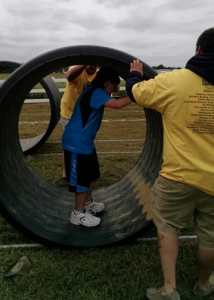

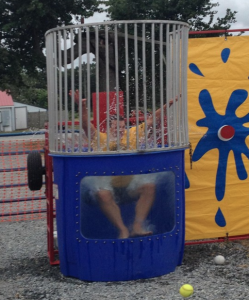
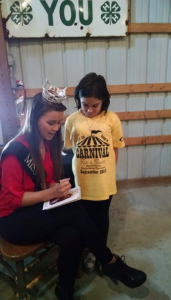

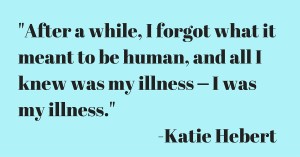




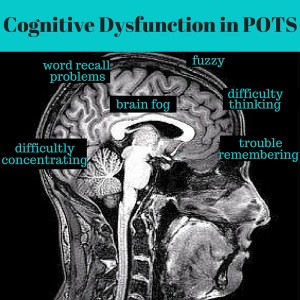
![AmyA[1]](https://dysautonomiainternational.org/blog/wordpress/wp-content/uploads/2016/02/AmyA1.jpg)





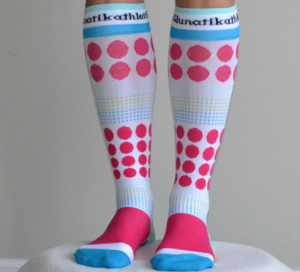







 Maddy is a 23-year-old disability activist based in the San Francisco Bay Area. She is the Systems Change Advocate at the Marin Center for Independent Living and the Youth Caucus Chair of the National Council on Independent Living. She also serves on the Scripps College Board of Trustees. She graduated summa cum laude and Phi Beta Kappa from Scripps College, where she majored in American Studies.
Maddy is a 23-year-old disability activist based in the San Francisco Bay Area. She is the Systems Change Advocate at the Marin Center for Independent Living and the Youth Caucus Chair of the National Council on Independent Living. She also serves on the Scripps College Board of Trustees. She graduated summa cum laude and Phi Beta Kappa from Scripps College, where she majored in American Studies.